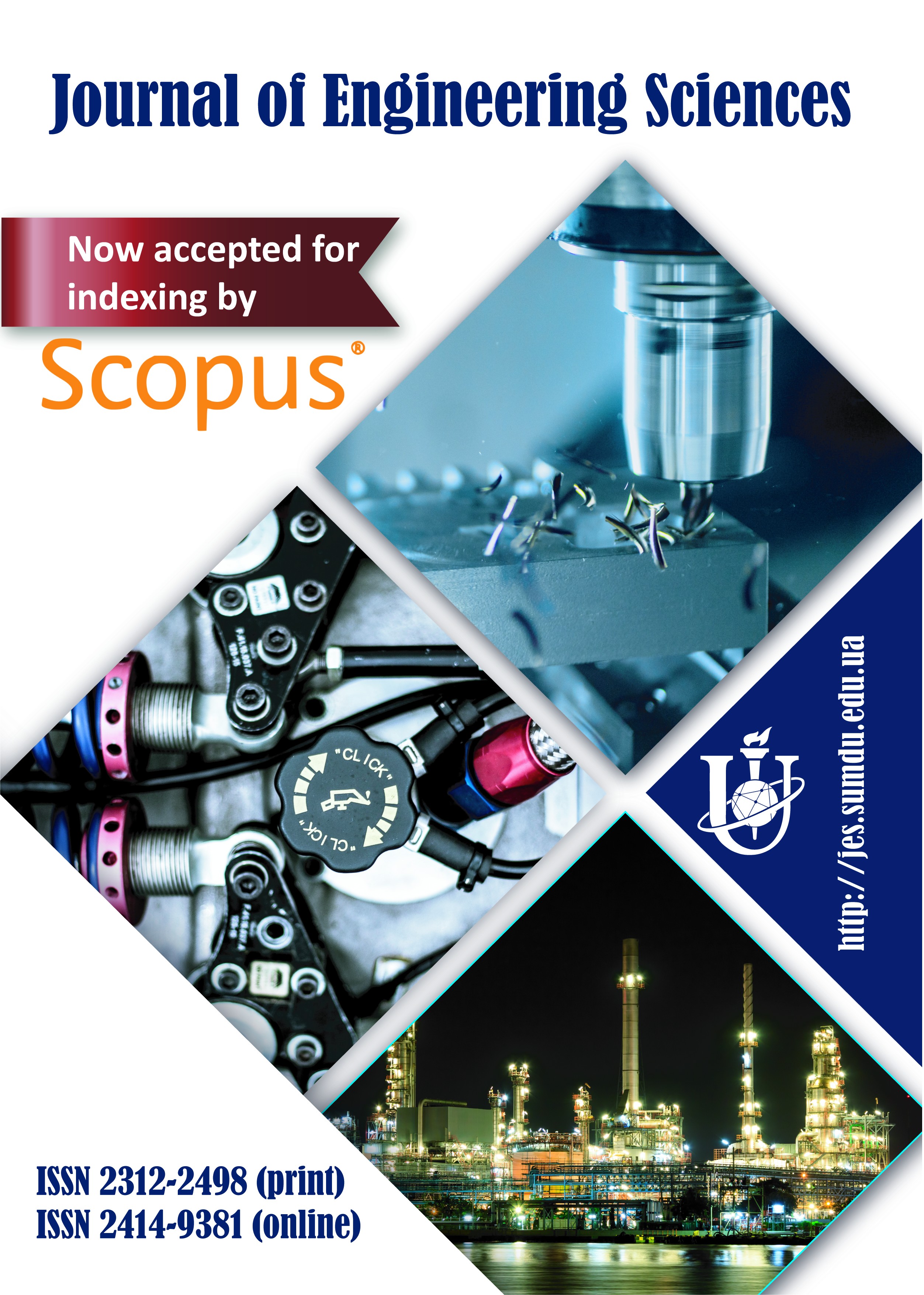Model of the management program for a means complex of the design works automation as a finite-state automaton
Author(s): Zakharchenko V. P.1*, Marchenko А. V.1, Nenia V. H.1
Affilation(s): 1Sumy State University, 2 Rymskogo-Korsakova St., 40007, Sumy, Ukraine
*Corresponding Author’s Address: [email protected]
Issue: Volume 4; Issue 2 (2017)
Dates:
Paper received: November 11, 2017
The final version of the paper received: November 28, 2017
Paper accepted online: December 1, 2017
Citation:
Zakharchenko V. P. Model of the management program for a means complex of the design works automation as a finite-state automaton / V. P. Zakharchenko, A. V. Marchenko, V. H. Nenia // Journal of Engineering Sciences. — Sumy : Sumy State University, 2017. — Volume 4, Issue 2. — P. H1-H8.
DOI: 10.21272/jes.2017.4(2).h1
Research Area: Computational Engineering
Abstract: For software development it is necessary to have its mathematical model. It is established that for a means complex of the design works automation a model of a finite automaton is the best choice. The automatic machine has been chosen with a single feedback state, which asynchronously initiates the execution of design procedures, on which there are Terms of References. For this an additional requested automaton is used. This automaton implements the selection of design work according to a status of the initiated design procedure. Commands of designers also are processed by a separate automaton. Situations arising in the automated design process and are associated with designers’ commands, are divided into five groups.
Keywords: program model, finite-state automaton, automation means, design works.
References:
- Prohorov, A. F. (1987). Konstruktor i EVM. Mashinostroenie [in Russian].
- Budya, A. P., Kononuk, A. E., et. al. (1988). Spravochnik po SAPR. Tehnika [in Russian].
- Zhuk, K. D. & Timchenko, A. A. (1983). Postroenie sovremennyh system avtomatizacii proektirovaniya. Naukova dumka [in Russian].
- Karpov, U. G. (2010). Model cheking. Verifikacija parallel’nyh i raspredelennyh programmnyh system. BHV-Peterburg [in Russian].
- Fedotov, I. E. (2012). Modeli parallel’nogo programmirovaniy. Solon-Press [in Russian].
- Amosov, N. M. & Artemenko I. A. (1974). Jenciklopedija kibernetiki. Ukr.-sov. encikl. [in Russian].
- Gill, A. (1966). Vvedenie v teoriyu konechnuh avtomatov. Nauka [in Russian].
- Zaboleeva-Zotova, A. V. & Orlova, U. A. (2010). Avtomatizaciya nachal’nuh etapov proektirovaniya programmnogo obespecheniya. Izvestija Volgogradskogo gosudarstvennogo tehnicheskogo universiteta, Vol. 6 (8), 121–124 [in Russian].
- Filatov, V. A. & Kozyr’, O. F. (2013). Model’ povedeniya avtonomnogo scenariya v zadachah upravleniya raspredel’onnymi informacionnymi resursami. Inzhenernyj vestnik Dona, Vol. 26, No. 3 (26), 24–36 [in Russian].
- Kozachenko, V. F. (2010). Effektivnyj metod programmnoj realizacii diskretnyh upravljajushhih avtomatov vo vstroennyh sistemah upravlenija [in Russian].
- Novozhilov, B. M. (2015). Primenenie grafov v razrabotke programm dlja PLK. Vol. 2, p. 6 [in Russian].
- Muchopad, U. F. & Muchopad, A.U. (2014). Analiz i sintez upravljajushhih avtomatov slozhnyh tehnicheskih sistem. XII Vserossijskoe soveshhanie po problemam upravlenija VSPU-2014, pp.7295–7306 [in Russian].
- Smirnova, N. V. & Smirnov, V. V. (2014). Primenenie teorii konechnyh avtomatov v razrabotke programmnyh sistem. Tehnіka v sіl’s’kogospodars’komu virobnictvі, galuzeve mashinobuduvannja, avtomatizacіja, Vol. 27, 316–320 [in Russian].
- Bolshakov, O. S., Petrov, A.V., et. al. (2015). Model’ raspredelennyh programm dlja vstraivaemyh sistem. Vestnik Rybinskoj gosudarstvennoj aviacionnoj tehnologicheskoj akademii im. P.A. Solovyova, Vol. 1 (32), 165–171 [in Russian].
- Vorobev, V. A. (2006). Model’ parallel’nogo avtomata. Avtometrija, Vol. 42 (3), 85–93 [in Russian].
- Kyzmin, E. V. (2006). Ierarhicheskaja model’ avtomatnyh programm. Modelirovanie i analiz informacionnyh sistem, Vol. 13 (1), 27–34 [in Russian].
- Schiff, J. L. (2011). Cellular automata: a discrete view of the world. John Wiley & Sons.
- Furia, C. A. (2012). A survey of multi-tape automata. arXiv preprint, arXiv:1205.0178.
- Tvardovskii, A. S. & Evtychenko, N. V. (2014). K minimizacii avtomatov s vremennymi ogranichenijami. Vestnik Tomskogo gosudarstvennogo universiteta. Upravlenie, vychislitel’naja tehnika i informatika, Vol. 4, 77–83 [in Russian].
- Melnikov, B. F. & Melnikova, A. A. (2011). Mnogoaspektnaja minimizacija nedeterminirovannyh konechnyh avtomatov. Chast’ І: Vspomogatel’nye fakty i algoritmy. Izvestija vysshih uchebnyh zavedenij. Povolzhskij region. Fiziko-matematicheskie nauki. Matematika, Vol. 4 (20), 59–69 [in Russian].
- Orlov, M. A. (2006). Osnovy klassicheskoj TRIZ. Prakticheskoe rukovodstvo dlja izobretatel’nogo myshlenija. Solon-Press [in Russian].
- Lee, E. A. & Varaiya, P. (2007). Structure and Interpretation of signals and Systems. Lee & Seshia.
- Karpov, Y. G. (2003). Teorija avtomatov. Piter [in Russian].
- Cheremisinov, D. I. (2011). Proektirovanie i analiz parallelizma v processah i programmah. Belarusskaja nauka [in Russian].







